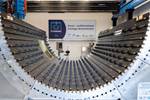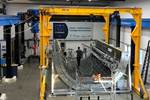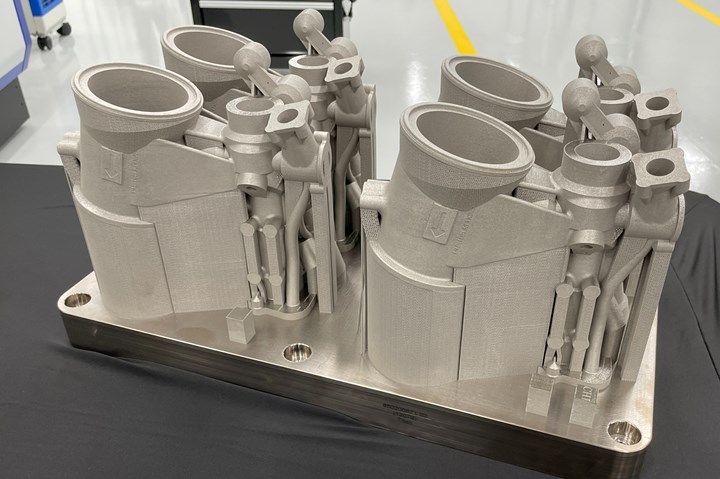Collins Aerospace selected by AFRL to build thermoplastic composite fin for F-16
Part of $100 million, five-year investment to advance, qualify thermoplastic composites for military and commercial aero applications.
The F-16 aircraft in flight. Photo Credit: Collins Aerospace
Collins Aerospace (Riverside, Calif., U.S.) was selected by (AFRL, Wright-Patterson Air Force Base, Ohio, U.S.) to receive a contract award to build an advanced high-impact resistant, F-16 ventral fin using Collins’ thermoplastic welding technology, which will significantly reduce weight and cost of the current design.
Collins is investing approximately $100 million dollars over the next five years toward the advancement of its thermoplastic technology and plans to qualify and process thermoplastic materials for both military and commercial use (see “Collins Aerospace demonstrates new thermoplastic composites capabilities”). Under the three-year contract, the proposed work includes application of a specialized welding process, component design and prototype fabrication for the F-16 ventral fin. The effort will leverage best practices from similar programs including the recent composite-based F-16 horizontal stabilator.
“We are seeing an increased demand and opportunity to replace legacy aircraft components with thermoplastics,” Stan Kottke, vice president and general manager of Aerostructures for Collins Aerospace, says. “The trend is using advanced thermoplastic materials to lower the cost and weight while reducing our overall environmental footprint, and those benefits are directly passed on to our customer.”
Through automation processes on the manufacturing floor, the cost savings are expected to be upward of 30% where Collins can use thermoplastic composite materials. Thermoplastic resin is inherently tougher than thermoset resins typically used in production the company notes. Tougher materials reduce the overall weight, enabling thinner design and increased range of the payload. Thermoplastic materials have an indefinite shelf life, can be stored at room temperature, and can be reused or recycled. This eliminates the need for energy-intensive cold storage required for thermoset raw materials.
According to Collins, the next step is to advance and mature the designs and manufacturing technologies specific to forming and thermally joining thermoplastics to create component assemblies. This work will be accomplished within the Riverside composites center.
The IP challenges of parts made through AM is one of the factors that led Collins Aerospace to launch a new site for additive production. The North Carolina facility supports Collins business units across the country. See video and learn about the new .
Related Content
-
Plant tour: Collins Aerospace, Riverside, Calif., U.S. and Almere, Netherlands
Composite Tier 1’s long history, acquisition of stamped parts pioneer Dutch Thermoplastic Components, advances roadmap for growth in thermoplastic composite parts.
-
Thermoplastic composites: Cracking the horizontal body panel nut
Versatile sandwich panel technology solves decades-long exterior automotive challenge.
-
Welding is not bonding
Discussion of the issues in our understanding of thermoplastic composite welded structures and certification of the latest materials and welding technologies for future airframes.







